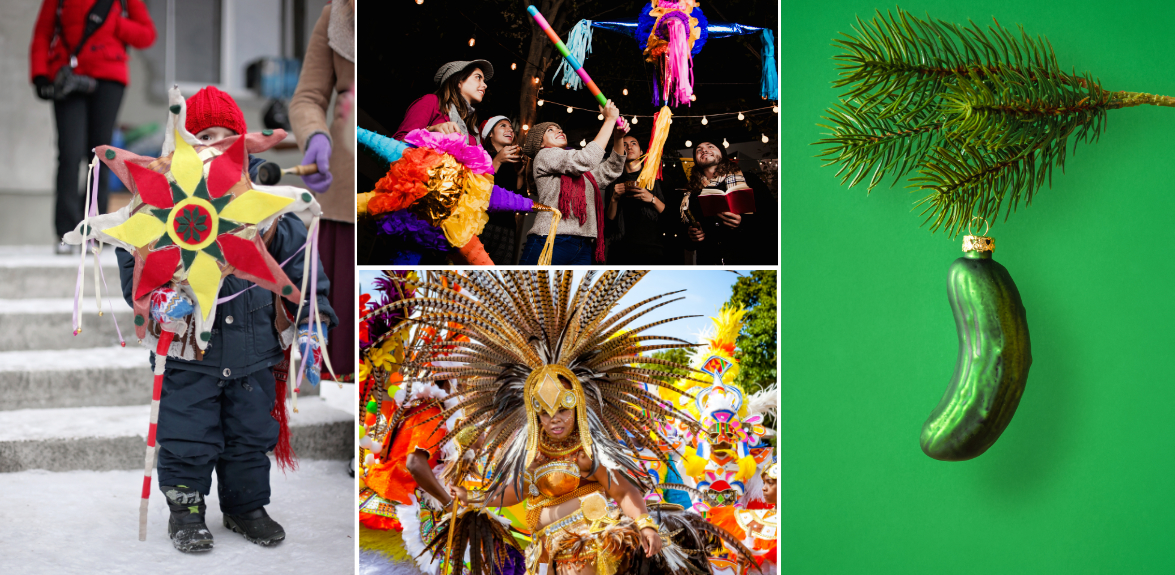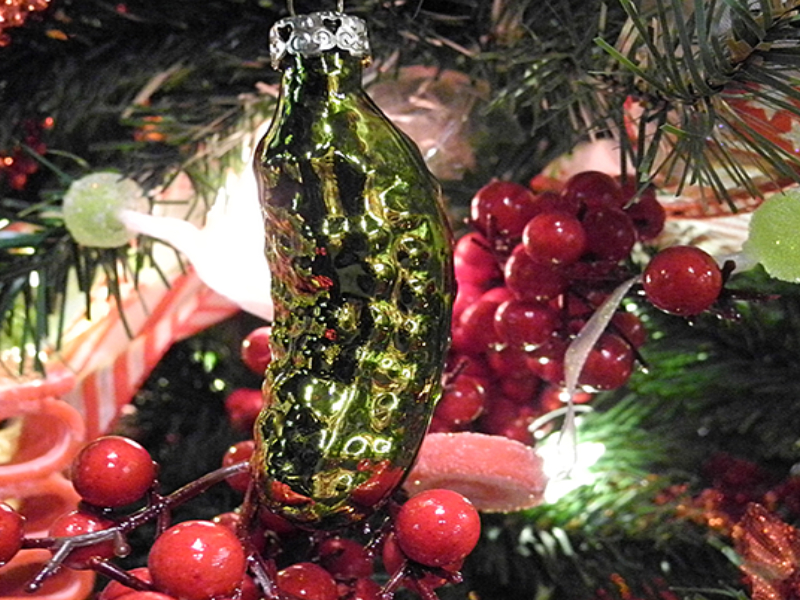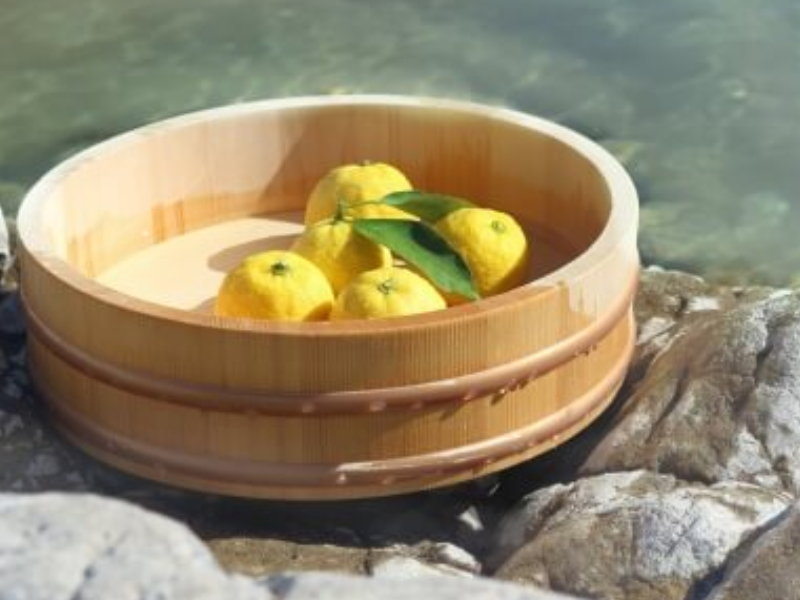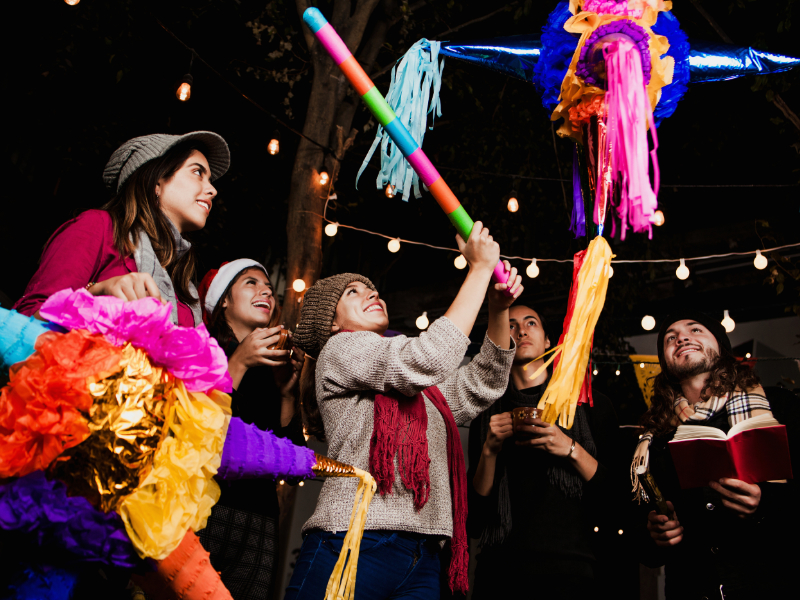This article was featured in our Holiday 2020 issue, during the first year of the pandemic.
 Travel is still at a standstill right now due to the pandemic, so we thought we would armchair travel and look at various traditions and customs from around the world for this issue – and there are many. No matter where you live, what you believe in, or what traditions you follow, every holiday has a special meaning with lessons to be learned.
Travel is still at a standstill right now due to the pandemic, so we thought we would armchair travel and look at various traditions and customs from around the world for this issue – and there are many. No matter where you live, what you believe in, or what traditions you follow, every holiday has a special meaning with lessons to be learned.
Not only do the holidays bring joy, but they’re also a reminder to slow down your pace, be present and appreciate the beauty of life while being surrounded by your loved ones. As we all are familiar with the origins and the celebration of the most popular holidays such as Halloween, Christmas, Valentine’s Day, or Easter, the world has a lot more to offer.
Junkanoo | The Bahamas
Junkanoo is a street parade, a live tradition with music, dancing, and costumes of mixed African origin. This parade happens on many islands across the English-speaking Caribbean every Boxing Day (26th of December) and New Year’s Day (1st of January). The most popular belief is that it evolved from the days of slavery. The loyalists who migrated to The Bahamas in the late 18th century brought their African slaves with them, who were given three days off during the Christmas season.
The days were celebrated by singing and dancing in colourful masks, traveling from house to house, often on stilts. After slavery was abolished, the Junkanoo festival nearly vanished, but its revival in The Bahamas now provides entertainment for thousands of people each year. As the parade happens through the streets of downtown Nassau in the early hours of the morning, between 2 a.m. to 10 a.m., the energy of the thousands of dancers, and the beat of the music motivates the vast crowds of spectators to start dancing and even climbing the trees to watch it closely. At the end of the famous Junkanoo procession, some judges award cash prizes for the best music, costume, and overall group presentation.
Christmas Pickle | United States
The Christmas Pickle is a lesser-known Christmas tradition in the United States. The tradition, an ornamental pickle, is placed on the Christmas tree as one of the decorations. On Christmas morning, the first person to find the pickle on the tree would receive an extra present from Santa Claus, or it is said to have a year of good fortune. If you take part in the Christmas pickle tradition, odds are you live in the American Midwest, and you’re likely of German descent.
As the story goes, the German diaspora residing in the U.S. allegedly brought the Christmas pickle’s custom with them. It is also suggested that the origin of the Christmas pickle may have been developed for marketing purposes in the 1890s to coincide with the importation of glass Christmas tree decorations from Germany. Woolworths company was the first company to import these types of decorations into the United States.
Toji | Japan
The Japanese Winter Solstice tradition, Toji is the day of the year when the night is the longest. This year it falls on December 21st with a sunrise from 6:48 a.m. and sunset at 4:32 p.m. As the days are getting colder and the people look for ways to rejuvenate the body and protect it against sickness, the Japanese developed traditions as the Yuzu Bath. It is said that the custom of taking a bath with yuzu, a Japanese citrus fruit, started during the Edo period (1603 – 1868).
There are many reasons why both eating and taking a yuzu bath is a good thing: it has a lot of vitamin C, which is essential against colds, gives a lovely fragrance to the skin, and because of the sharp smell of citrus, it is believed to keep the demons and bad luck at bay.
KFC Christmas Dinner | Japan
Starting with 1974, every Christmas season, an estimated 3.6 million Japanese families treat themselves to Kentucky Fried Chicken, in what has become a nationwide tradition called Kurisumasu ni wa Kentakkii, or “Kentucky for Christmas.” The Americanfast-food chain is soprevalent in Japan at Christmas that KFC suggests that customers place their holiday order two months in advance.
Caroling with The Star | Romania
One of the most beautiful parts of a Romanian Christmas is the magical suite of carols that can be heard all over the country, from the most remote villages to the classiest venues in the capital city. Accompanied by wishes for health, prosperity, and fulfillment, the Romanian carols aren’t only simple Christmas songs, they usually come together with rituals, special costumes, and theatrical performances. One of the most popular caroling tradition is “Steaua” (The Star).
The star is made of coloured paper and decorated with tinsel, silver foil, and sometimes bells. In the middle of the star is a picture of baby Jesus. The star is put on a pole and groups of kids will take the star with them when they go carol singing. The custom of carrying around the star relates to the Biblical story of the Star from Bethlehem.
El Caganer | Spain
Spain’s Caganer – a male figurine with his pants rolled down, depicted in the act of defecation, is a particular highly popular feature of modern Catalan nativity scenes, believed to have appeared by the early 18th century, during the Baroque period. The folklorist Joan Amades called it an essential piece and the most popular figure of the nativity scene. When it comes to the figurine’s significance, one theory goes that it represents the fertilization of the earth, which yields our daily food.
The folklore also says that farmers would be punished with a poor crop harvest and bad fortune if they didn’t expose a caganer figurine. Today, the tradition continues with Christmas markets selling old carved caganers alongside new versions that feature faces such as nuns, historical figures, politicians, famous footballers, and even presidents.
Las doce uvas de la suerte | Spain
Known as Las doce uvas de la suerte, the twelve grapes of luck dates back to a least 1895. The Spanish tradition consists of eating a grape each time the bell strikes at midnight on Dec. 31. The practice welcomes in the New Year, and according to the custom eating the grapes leads to a year of good luck and prosperity.
In some areas of Spain, it is believed by eating the grapes, witches, and general evil are warded off. While it has a long history, the tradition was established in 1909, when Alicante growers popularized the custom to sell more grapes. The tradition has been adopted in some Latin American countries, American Hispanic communities, and the Philippines.
Las Posadas | Mexico
Las Posadas or “The Lodge/Inns,” is a religious festival celebrated in Latin America, Mexico, Guatemala, Cuba, Spain, and some parts of the U.S.A, between the 16th and 24th of December. It is believed to have originated in Mexico via Spanish missionaries and commemorates Joseph and Mary’s journey from Nazareth to Bethlehem.
The celebration has been a Mexican tradition for over 400 years, starting in 1586. Today it involves lots of singing, and children dressed as angels. Each posada ends the night at someone’s pre-selected home, where, after initially being turned away, they’re being welcomed with tamales and Christmas punch. The party ends with the ceremonial whacking of the candy-filled “piñata,” often a seven-pointed star representing the seven deadly sins that need to be smashed.
The Night of the Radishes | Mexico
Noche de Los Rábanos is an annual event held on the 23rd of December in Oaxaca, Mexico, and has people carving oversized radishes. The radish carving competition dates back to 1897 when Oaxaca City’s mayor decided to make it a part of that year’s Christmas market. The radishes had always been a part of the Christmas cuisine so this radish contest was viewed as a fun way to promote local agriculture.
Even though there are a lot of planning involved in the contest, the entire event takes place in just a few hours, as once the radishes start to wilt and turn brown, their allure is over. The families and groups of carvers start working together from the morning of the event to have their scenes ready for display by 5 p.m. The tourists and guests are invited to walk among the sculptures for a few hours, with prizes awarded later in the evening.
La Befana | Italy
In the Italian folklore, Befana is an old woman who delivers gifts to children throughout Italy similarly to St. Nicolas or Santa Claus. She is said to visit all the children of Italy on the eve of the Feast of the Epiphany (January 5 th ) to fill their socks with candy and presents if they are good, or a lump of coal or dark candy if they are bad. In rural Sicily, a stick is placed in the stocking rather than coal.
Being a good housekeeper, many people say she will sweep the floor before she leaves. The sweeping significance is the sweeping away of the problems of the year. Out of respect, the child’s family typically leaves Befana a glass of wine and a plate with food, often regional or local.




















